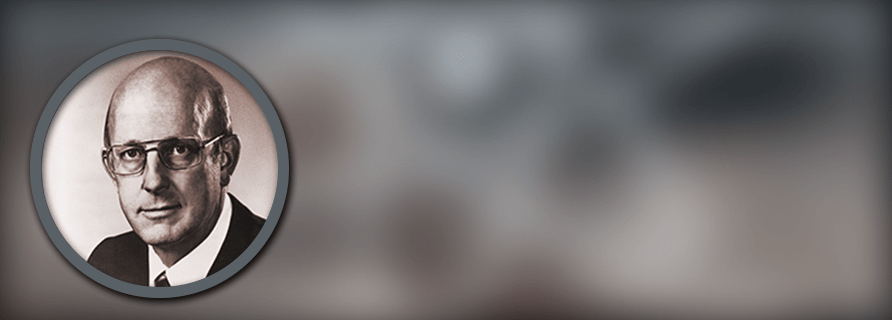Timeline: HTML Version

Jon H. Jennekens
(1978 - 1987)
1978-12-29
Jon H. Jennekens is appointed AECB President Jon H. Jennekens becomes President of the AECB and serves until 1987. He had previously held the position of Director General, Operations Directorate at the AECB.
1978-01-01
The AECB opens a lab at its Ottawa headquarters Later that year, the lab is relocated within the city to the Pickering Building. The lab performs instrument calibration and repairs to help monitor the compliance of AECB licensees.
1978-01-24
The Soviet Kosmos 954 satellite spreads radioactive debris in the Northwest Territories The USSR nuclear-powered satellite, Kosmos 954, re-enters the atmosphere and spreads radioactive debris over a large area in the Northwest Territories. Intensive search-and-recovery operations begin under the direction of the Department of National Defence. The AECB is responsible for retrieving and handling recovered material and for conducting health and environmental impact assessments.
1979-01-18

Bruce A Unit 4 begins operation The Bruce A Nuclear Generating Station’s fourth reactor (Unit 4) began construction September 1, 1972. On January 18, 1979, Bruce A Unit 4 is declared in service. (Source: Bruce Power)
1979-03-01
Accident at Three Mile Island Equipment failure and human error contribute to an accident at the Three Mile Island Nuclear Generating Station near Harrisburg, Pennsylvania. The accident is called the worst nuclear accident in U.S. history, although no one is injured.
- ARCHIVED - Three Mile Island – A Review of the Accident and Its Implications for CANDU Safety, B.J. Pannell and F.R. Campbell, AECB
- ARCHIVED - Impact of the Three Mile Island Accident on Reactor Safety and Licensing in Canada, J.D. Harvie, CCEA
- ARCHIVED - The Nuclear Regulatory Process In Canada - "After" Three Mile Island, Jon H.F. Jennekens (AECB President)
- ARCHIVED - AECB Annual Report 1979–1980, p. 1
1980-01-01

AECB increases communication with Canadians As part of its commitment toward greater transparency, the AECB expands its interactions with Canadians. During the year, a public access policy is put in place allowing the public to read information about licensing applications. In the new policy, the AECB also commits to work with the media when it orders corrective measures for nuclear facilities or when there are significant public or environmental hazards.
1980-01-01

Public consultation program for regulatory documents begins Building further on its commitment toward greater transparency, the AECB launches a public consultation program, publishing for comment all proposals for new or revised regulations, safety criteria, and regulatory policies and guides.
1981-06-01
The AECB gives the green light for four power reactors at Darlington The AECB Board of Directors gives approval for the start of construction of four power reactors at the Darlington site near Bowmanville, Ontario.
1982-01-01

A government office opens to address historic radioactive waste The Government of Canada establishes the Low-Level Radioactive Waste Management Office to manage historic waste in the town of Port Hope and across Canada.
1982-01-01
Study of underground storage of nuclear fuel waste begins in Canada Atomic Energy of Canada Ltd. establishes its Underground Research Laboratory in Manitoba to study the safe disposal of nuclear fuel waste. In 2003, Whiteshell received approval of an overall decommissioning framework, through the completion of an environmental assessment and the subsequent issuing of a site decommissioning licence by the CNSC. Today, Whiteshell is owned by Canadian Nuclear Laboratories.
1982-07-01
The Point Lepreau reactor begins operation in New Brunswick The Point Lepreau Generating Station's reactor begins operating. The station is located approximately 40 kilometres west of Saint John, New Brunswick and on the shores of the Bay of Fundy. (Source: NB Power)
1983-11-01

New regulations come into effect for the packaging of radioactive materials All nuclear substances are now transported in packages that are selected based on the nature, form and quantity or activity of the substance. General design requirements apply to all package types to ensure that they can be handled safely and easily, secured properly, and are able to withstand routine conditions of transport.
1984-01-01

Canada becomes nuclear weapon free All nuclear weapons are removed from Canadian territory. Canada was the first country with substantial nuclear capability to reject nuclear weapons, and continues to be actively involved in the international promotion of the peaceful use of nuclear energy. As part of an international community of nuclear regulators, the CNSC works bilaterally and multilaterally with partners around the globe to strengthen nuclear security and non-proliferation at home and abroad.
1984-05-05
The Douglas Point facility is retired As the Bruce B Nuclear Generating Station prepares to begin operation, the Douglas Point facility is retired after 17 years of service. Its prototype reactor is permanently shut down and placed in an interim safe and sustainable shutdown state (storage with surveillance). (Source: Bruce Power)
1986-04-26

Nuclear accident at Chernobyl, Ukraine A power increase in the Chernobyl Nuclear Power Plant leads to explosions in the core of one of the reactors. The event is considered the worst nuclear power plant accident in history. The nuclear industry responds by creating the World Association of Nuclear Operators (WANO) in 1989. WANO's goal is to maximize the safety and reliability of the operation of nuclear power plants by exchanging information and encouraging communication, comparison and emulation among its members. (Source: Bruce Power)
Page details
- Date modified: